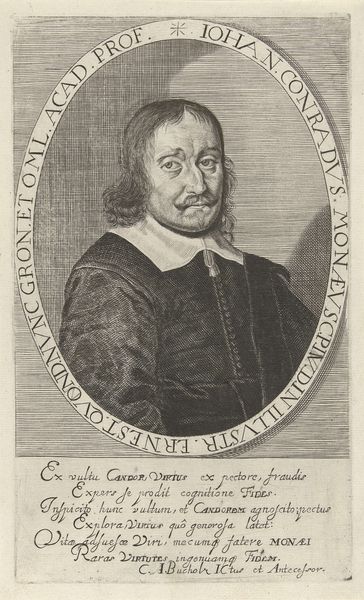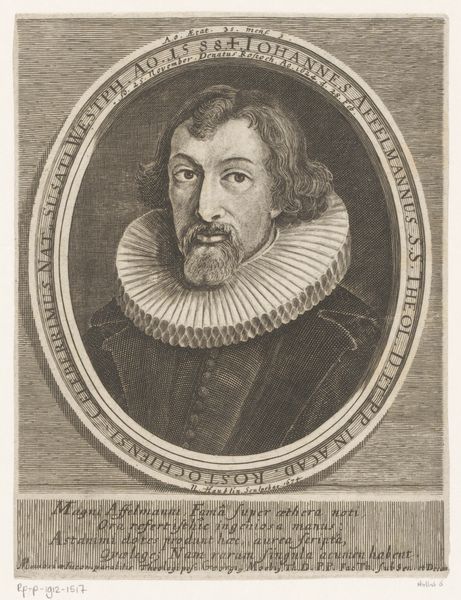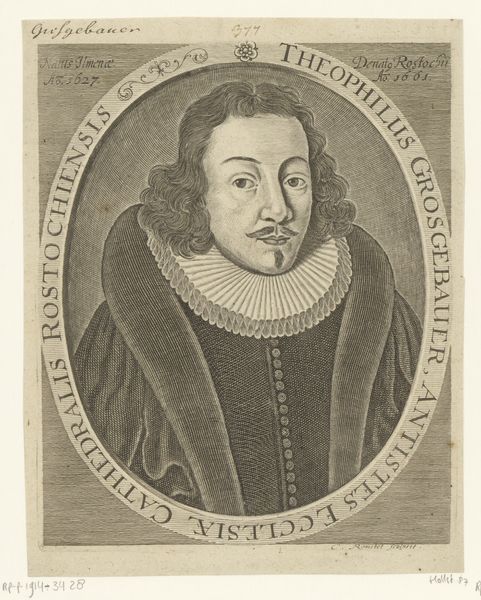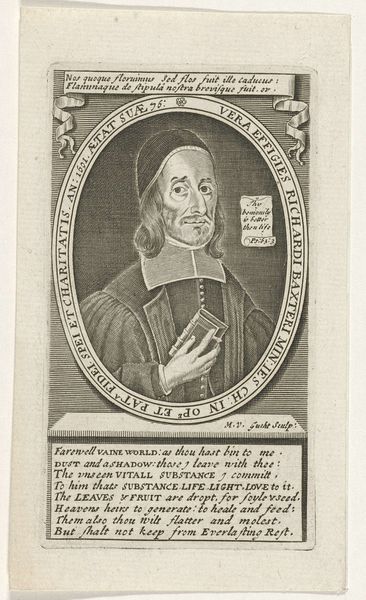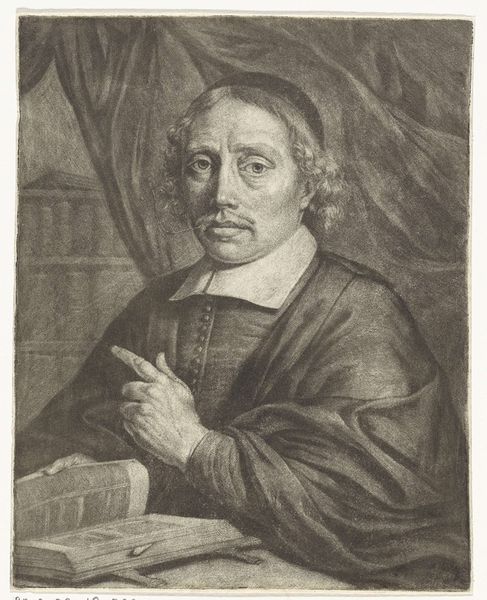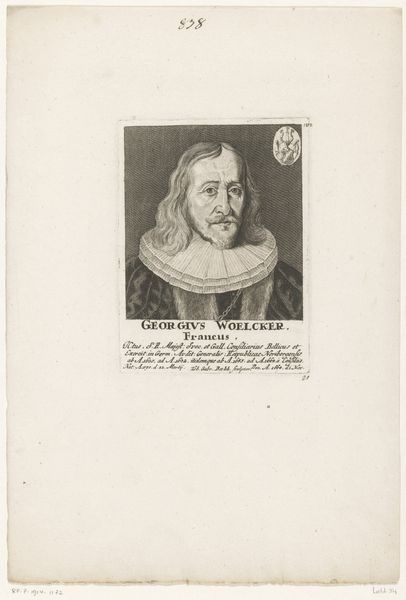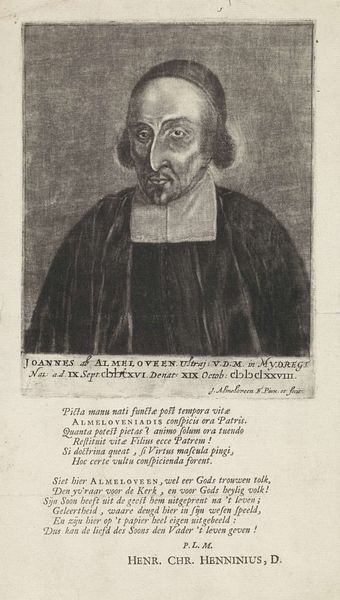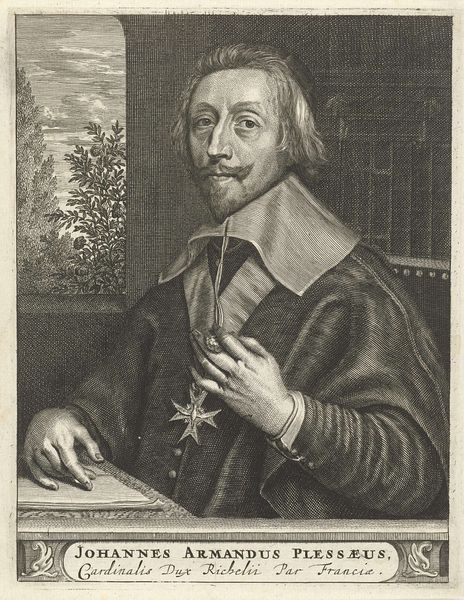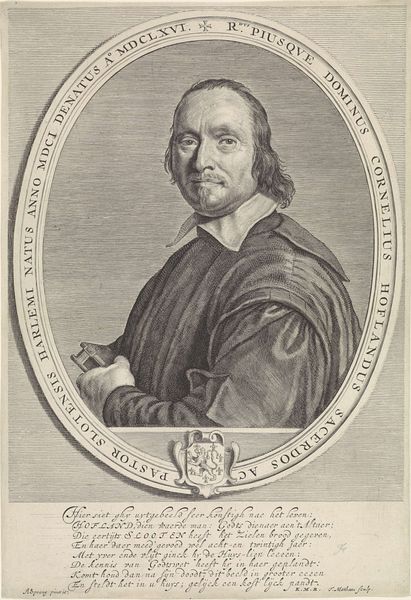
drawing, paper, ink
#
portrait
#
drawing
#
baroque
#
charcoal drawing
#
paper
#
ink
#
portrait drawing
Dimensions: height 180 mm, width 145 mm
Copyright: Rijks Museum: Open Domain
Editor: Here we have a drawing, "Portret van Johannes ab Almeloveen," created in 1678. It's an ink and charcoal piece on paper, currently residing in the Rijksmuseum. My first impression is one of quiet contemplation – almost austere. What do you see in it? Curator: Austere, yes, but also profoundly human. Look at the subtle lines around his eyes, the way the artist captured the weight of his brow. It feels less like a formal portrait and more like a glimpse into a lived life. He stares past the veil that most mortals are hiding behind. Notice the inscription below the portrait – can you imagine the weight and import the sitter and the artist would have placed on these words in that day? Editor: You mean that inscription; the Dutch script below the image? Is it about him? What would someone commission such a heavy image for, what was its purpose? Curator: Exactly! This was a commission that may have had varied intentions - memorial, commemoration, or perhaps just simply the sitter having enough florins to commission the art! Imagine being alive when that was commissioned – it might become your whole identity! The inscription speaks of life and the living Word giving life to the dying, almost like an epitaph before the tomb. And, Baroque, mind you! Lots of serious intention, though, to me, this isn't as heavy handed as other works from the time... What about you? Is the mood beginning to shift as we discuss the artwork further? Editor: It is. I was so focused on the somber tones, I hadn’t really noticed the small details. Now, knowing it might have been commissioned as a… memento mori sort of piece, I can appreciate that quiet intensity you mentioned. Curator: Precisely. Baroque wasn’t always about grandiosity, you see, it was also a gateway into a deeper conversation, even when the canvas may at first glance portray a different purpose, like showing wealth and success. It shows, also, that the conversation isn't *done* once the artwork leaves the easel, it's carried forth by generations who come later. Editor: This has certainly opened my eyes to that. Thanks for shedding light on the more subtle nuances of this portrait.
Comments
No comments
Be the first to comment and join the conversation on the ultimate creative platform.

